Conservation Corner
Greetings, my name is George Muñoz and I am the Book Conservator here at The New York Society Library. I would like to welcome you to the inaugural installment of what I hope is going to be a fun and informative feature that I would like to call “Conservation Corner.”
The conservation studio located on the 4th floor along with the cataloging, systems, and acquisitions departments, is a fully-functioning studio where the vast majority of the Library’s binding, preservation housing, and conservation needs are handled.
Conservators make use of a wide range of tools and equipment both old and new. Anything from mid-19th-century type holders to state of the art fume hood extractors for use when working with solvents or when dealing with mold remediation can be found in the studio.
For this first installment, I would like to spend some time taking you on a quick photo tour of my workplace and show you some of the tools of my trade.
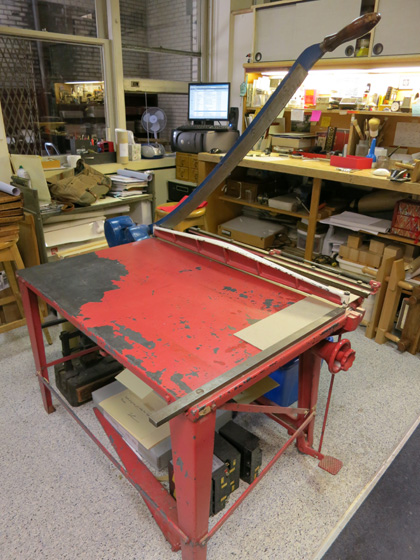
The board shear is the most used piece of equipment in the studio. With its long and sharp blade, I use it to trim paper and to cut thick binder’s board which is used for making custom clamshell enclosures and covers for books. For obvious reasons, many staff members are afraid of my board “chopper” . Admittedly, I am quite happy with this state of affairs.
Presses (a range of which are shown below) are another type of equipment indispensable to both the conservator and binder.
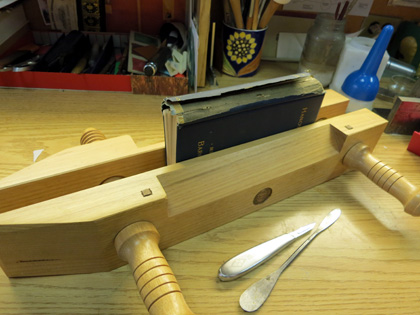
With the aid of two wooden “cheeks” and wooden screws that apply pressure, the finishing press holds the book firmly in place while treatments are carried out.
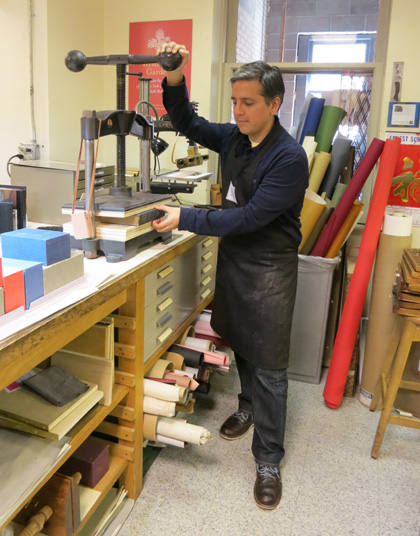
After books have been bound, the nipping press allows one to apply varying amounts of pressure during the drying phase in order to keep boards from warping. Also good in a pinch when you want to flatten your ham sandwich.
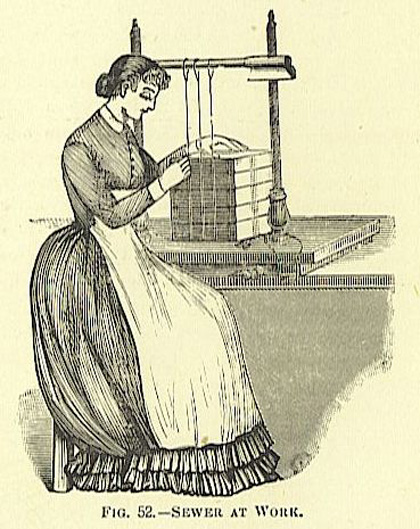
Makes sewing books (textblocks) by hand a pleasure! Two uprights and a crossbar hold tapes or cords in tightened place while the binders hand zips in and out with needle and thread sewing one section at a time. We have two very nice sewing frames up on the fourth.
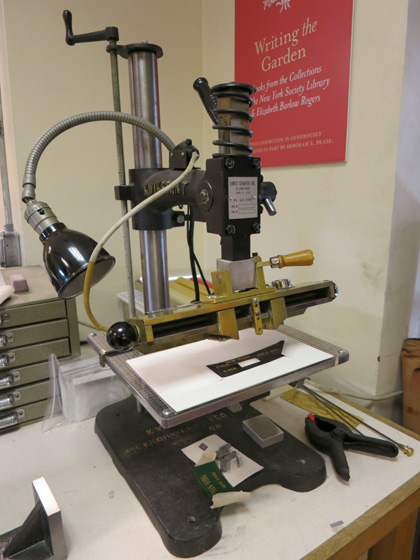
We use our Kwik-Print stamper to create titles and labels for books. It heats type which is then stamped through gold foil onto labels or directly onto the spine of a book.
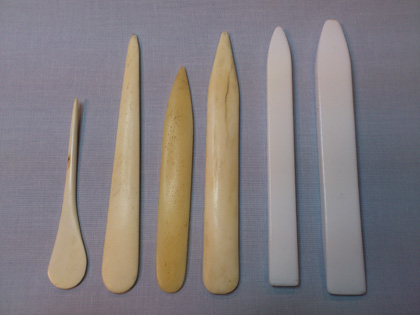
A multi purpose tool that is primarily used to crease and fold paper but can also be used for burnishing leather . It is as indispensable to a conservator as a pencil is to an artist. – Originally made of whale bone (tough to come by these days), today elk is more common. Bonefolders are also available in more modern materials such as Teflon.
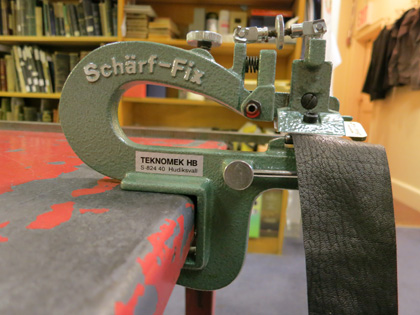
When binding or repairing a book with leather, it is sometimes necessary to thin thicker leathers. With our parer, a two-sided razor blade is attached to the top jaw. Pieces of leather are passed through the jaws, until the desired thickness is achieved.
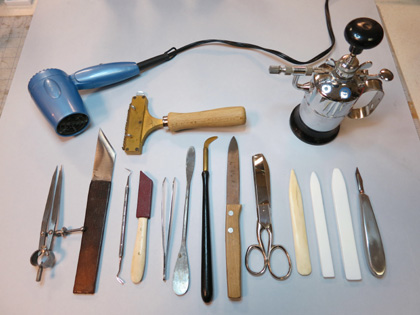
A wide range of tools used in the studio including a fine mist Dhalia Sprayer, leather parers, spatulas, scalpels, brass type holder, antique agate burnisher, tools that used to belong to my father’s dental practice (good for precision work) and even a hair dryer useful for quick drying of adhesives and paints.
Stay tuned for the next installment in which I will explain how the Library’s sad, damaged books make their way up to the bindery and what I do with them when they get here.


Disqus Comments